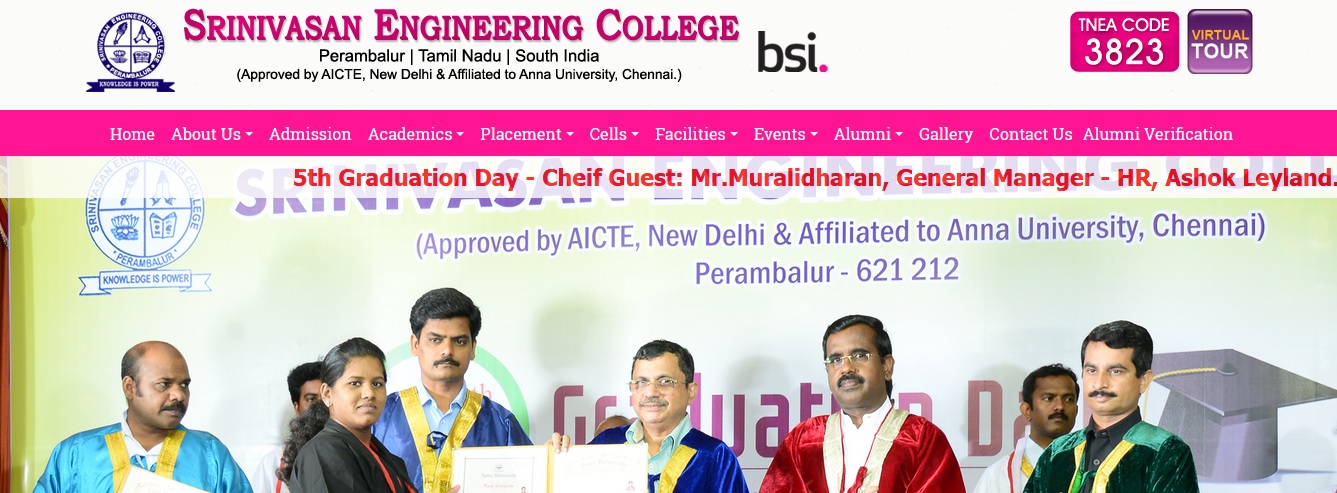AE2253 Production Technology B.E Question Bank : sriengg.com
Name of the College : Srinivasan Engineering College
University : Anna University
Department : Aeronautical Engineering
Degree : B.E
Subject Code/Name : AE2253 Production Technology
Year : 2nd
Semester : 4th
Document Type : Question Bank
Website : sriengg.com
Download Model/Sample Question Paper :
Part-A : https://www.pdfquestion.in/uploads/sr…pt-2-marks.pdf
Part-B : https://www.pdfquestion.in/uploads/sr…t-16-marks.pdf
Sri Engg Production Technology Question Bank
UNIT-I
Casting :
1. What is foundry? :
Foundry is the process of forming metallic products by melting the metal, pouring in to a cavity known as the mould.
Related : Srinivasan Engineering College AE1005 Wind Tunnel Techniques B.E Question Bank : www.pdfquestion.in/3212.html
2. What are the stages of casting process? :
1. Mould making
2. Clamping
3. Pouring
4. cooling
5. removal
6. trimming
3. What are the different types of pattern? :
1. Single piece pattern
2. split pattern
3. match plate pattern
4. cope and drag pattern
5. gated pattern
6. loose piece pattern
7. sweep pattern skeleton pattern
8. segmental pattern
9. Shell pattern

4. What are the properties of moulding sand? :
a. grain size and shape
b. porosity
c. refractoriness
d. strength
e. plasticity
5. What are the important methods of sand testing? :
** moisture content test
** clay content test
** grain fitness test
** strength test
6. What are the steps involved in refractoriness test? :
** prepare a cylindrical specimen of sand
** heating the specimen at 1500o C for 2 hours
** observe the changers in dimension and appearance
** if the sand is good, it retain specimen share and show very little expansion. If the sand is poor, specimen will shrink and distort.
7. What are the pattern materials used? :
** Wood and wood materials
** Metal and alloy
** Plasters
** Plastic and rubber
** Waxes.
8. What are the various types of pattern allowance? :
(i) Shrinkage allowance
(ii) Machining allowance
(iii) Taper allowance
(iv) Shake and distortion allowance
9. What are the basic steps in core making process? :
(i) core sand preparation
(ii) core making
(iii) core baking
(iv) core finishing
10. What is mean by core? :
A core is a part used in casting and moulding processes to produce internal cavity and reentrant angles.
11. Name the three types of core binders? :
(i) Thermoplastic binders
(ii) Thermosetting binders
(iii) Core oils
(iv) Clays
12. What are the types of cores? :
(i) Green sand cores
(ii) Dry sand cores
(iii) Oil bonded cores
(iv) Resin bonded cores
(v) Sodium silicate and CO2 cores
13. What are the tools used in moulding process? :
(i) Shovel
(ii) Riddle
(iii) Rammer
(iv) Strike-off bar
(v) Vent wire
(vi) Lifter
(vii) Trowel
(viii) Swab
14. What are the types of moulding processes? :
(i) Green sand moulding
(ii) Dry sand moulding
(iii) Loam moulding
(iv) Metal moulds
(v) Bench moulding
(vi) Floor moulding
(vii) Sweep moulding
15. How we are classifying the moulding machines? :
A. Hand operated moulding machine :
(i) Pattern draw type
(ii) Pin lift type
(iii) Role over type
B. Power operated moulding machine :
(i) Squeeze machine
(ii) Jolt machine
(iii) Jolt squeeze machine
(iv) Sand slinger
UNIT-II
Welding
1. Define welding.
Welding is a materials joining process in which two or more parts are joined together.
2. What are the types of welding processes?
(i) Oxyfuel gas welding
(ii) Arc welding
(iii) Resistance welding
(iv) Solid state welding
(v) Unique welding
3. Name the equipments used in gas welding?
(i) oxygen gas cylinder
(ii) acetylene gas cylinder
(iii) oxygen pressure regulator
(iv) acetylene pressure regulator
(v) oxygen gas hose (blue)
(vi) acetylene gas hose (red)
(vii) welding torch
(viii) filler rod and fluxes.
4. Name the equipment used in arc welding
(i) Arc welding power source
(ii) welding cables
(iii) electrode holder
(iv) welding electrode
(v) welding helmets and shields
5. What are the advantages of submerged arc welding?
a. Because of thigh heat concentration, considerably higher welding speed can be used.
b. High metal disposition rate can be achieved
c. Welding is carried out without spark, smoke, flash or spatter.
UNIT-III
Machining
1, Define cold working of metals?
Those process, which are working below the recrystallization temperature, are called cold working of metals
2, Define the process of mechanical working of metal?
Mechanical working process are based on permanent changes in the shape of body due to some extreme forces
3, Give some examples for mechanical working of metal?
Rolling Forging
Extrusion Drawing Press working
4, Define hot working of metals,
Those process which are working above the recrystalization temperature is known as hot
working of metals
5, Advantages of cold working over hot working
Good surface finish
Better dimensional accuracy